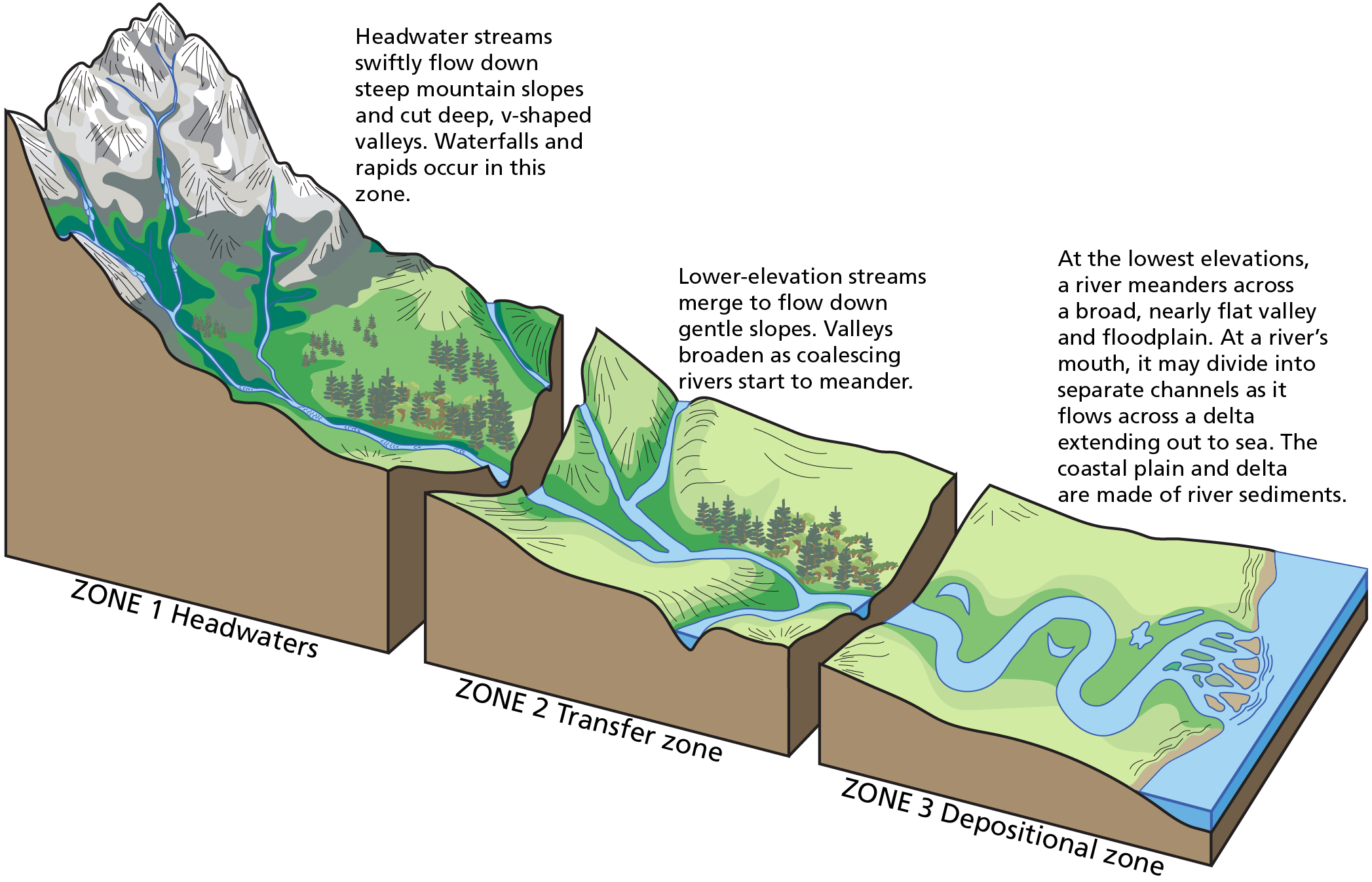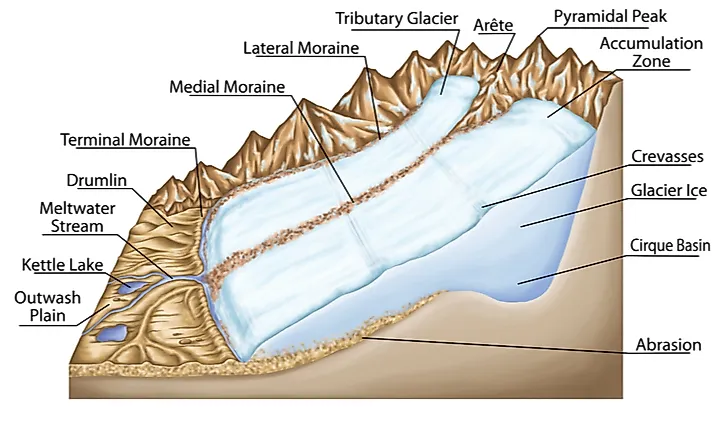Intrusive contact on a map looks like a rock seeped into another layer of rock. ATug Hill Plateau BAdirondack Mountains CSt.

Glacial Erosion And Deposition Earth Science
Continental and alpine 2.

. On the basis of shape. Deposition is the laying down of sediment carried by wind flowing water. The Grand Canyon and the Whitsundays are two perfect examples of weathering erosion and a phenomena called deposition.
C Three types of water bodies associated with continental glaciers. What are 3 types of deposition. Types of glacier.
Is material carried in the middle of the glacier. 338 and read the text below. Outer edges are like an arc of a circle or a bow.
Arcuate delta Arcuate delta is triangular in shape. Learn about and revise glacial landforms and processes including weathering erosion transportation and deposition with GCSE Bitesize Geography AQA. Foreset beds make up the main body of deltas.
Depositional plains are formed when substances are deposited from rivers glaciers waves and wind. Fluvial processes due to moving water mainly streams. But on almost all coasts both deposition and erosion are happening to varying degrees most.
When wave velocities slow down or when ocean currents slow down because of frictional forces like the sea bed vegetation and other counter currents deposition occurs. Glacial till Outwash deposits and plains Moraines Terminal lateral and ground moraineseskerdrumlins Nunatak roche moutonne. Truncated delta On the basis of growth.
Depositional plains It is of five types. Stratified drift is material that is deposited. On the basis of shape.
Horns and arêtes form when two or more cirques affect the same part of a mountain. It contains particles of many different sizes. 3The Catskills landscape region is classified as a plateau because it has Amountain Bplateau Clowland Dplain 4New York States Catskills are classified as which type of landscape region.
Draw a sketch and define the following. These are made up mainly from sediments deposited by waves. List them here and label them on the map.
Glaciers are formed by the accumulation and compaction of snow on mountains. SECTION 3 EROSION AND DEPOSITION BY ICE 1. The three types of rock contact is depositional contact intrusive contact and fault contact.
The plains formed by the filling up of sediments carried by agents of Erosion like wind rivers glaciers and underground water into depressions are called Depositional plains. Are formed by a combination of erosion transportation. Depositional plains Depositional landforms are formed by the Fragments of soil regolith and bedrock that are removed from the parent rock and deposited somewhere else.
Erosional plains are those that have been created by erosion die to glaciers wind running water and rivers. The Grand Canyon has been eroded over millions of years by the Colorado River and its tributaries where it carries the sediments down the river. Lacustrine processes due to moving water mainly lakes.
B Three types of depositional features associated with continental glaciers. S What evidence is there of current stream activity in the Buckeye Hills. Structural plains tend to be large flat surfaces which make up extensive lowlands.
What is the probable origin of the small hills just east of Highway 85 that are pictured on this map. The glacial landscapes are formed by the action of glaciers. Terminal Moraine is deposited by the glacier at the snout as it retreats.
It is formed due to the rivers. A huge moving sheet of ice 3. T Refer to the diagram showing the evolution of arid.
They are deposited at the outer edge of the delta at an angle of 5 to 25 degrees. The major depositional coastal landforms are beaches spits and bars. Most deltas contain three different types of deposits.
On a map depositional contact is represented by parallel layers lines that stack on top of each other. A Identify three erosional and depositional features of arid landscapes. 173 Landforms of Coastal Deposition.
Is the material that has fallen onto the side of a glacier and carried along by it. Riverine or alluvial plains are formed by river deposits. Lawrence Lowlands DChamplain Lowlands.
Alluvial type of Fluvial deposit. Aeolian Processes due to wind activity. Cirque and cirque lake Horns and Serrated ridges Arêtes Glacial valleys troughs Hanging valley.
Examples are- Mississippi delta Lomb-ardi plains Italy formed by Po river Yangtze plain China Indus plain Ganga USA plain Sacramento Russia Samarkand South America Chile plain Amazon plain Salween and Mekong plains. Foreset topset and bottomset beds. The main depositional features of the glacial landscapes are.
What is called deposition. Riverine Alluvial plains Glacial Plains Loess Plains Lacustrine Plains Riverine Alluvial Plains. These are the glacially formed accumulation of unconsolidated glacial debris.
Name the three types of rock contacts and describe how you would distinguish among them on a geologic map. Glaciers are made of frozen water. Look at the location map of coastal landscapes in.
Types of depositional environments. Some coastal areas are dominated by erosion an example being the Pacific coast of Canada and the United States while others are dominated by deposition examples being the Atlantic and Caribbean coasts of the United States.

River Systems And Fluvial Landforms Geology U S National Park Service
Depositional Environment Wikipedia

A List Of Glacial Depositional Features Or Landforms Worldatlas

Types Of Depositional Landforms

Geography Extreme Landscapes Desert Depositional Features

Erosion And Deposition By Glaciers Ck 12 Foundation


0 comments
Post a Comment